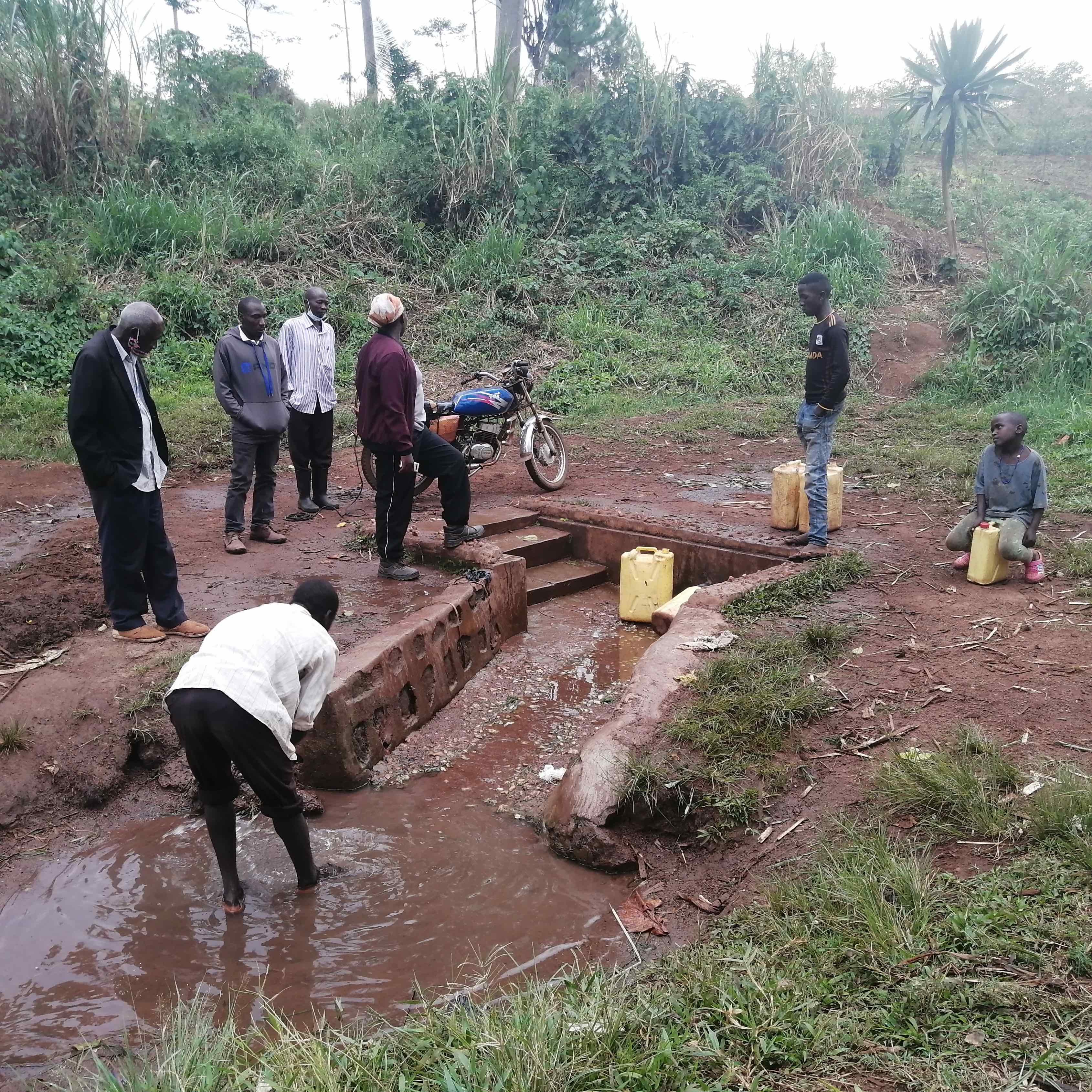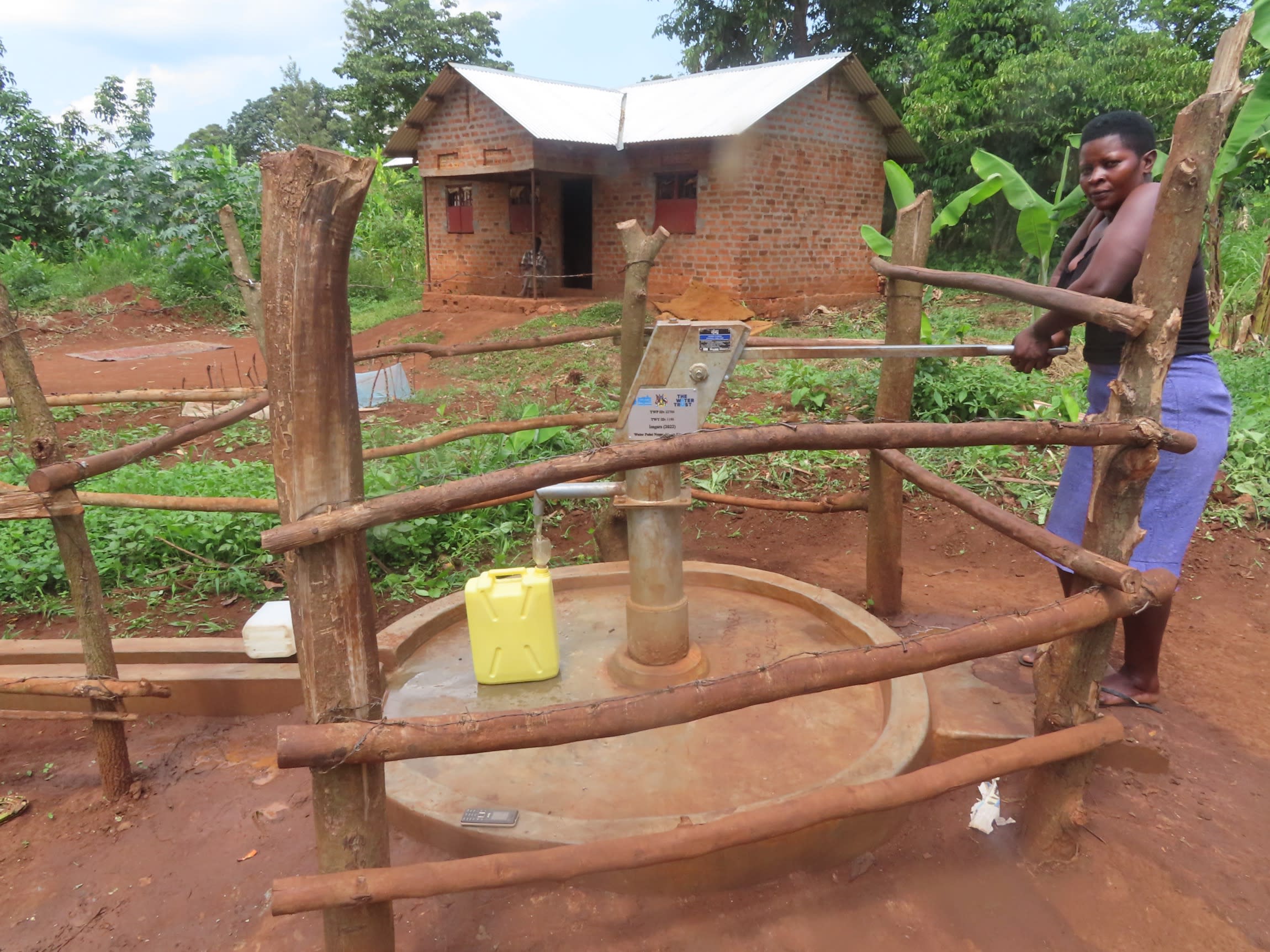The 350 people of Isagara Kiryanseka live three kilometers (approximately 1.86 miles) away from the nearest water source. Although the journey to the water source is downhill, this means that the worst part of the trip - the portion where community members are hauling heavy jerrycans full of water - is all uphill.

Beatrice Tomanya (45) described how the water crisis impacts the daily schedule of the community members. "When one wakes up in the morning, you imagine how you will get water home for the day. It's really a very tiresome experience, considering the long distance."
For people who have motorcycles and bicycles, it's a little bit easier. Sometimes, the community members purchase water from them in an attempt to avoid the long trek.
"Looking at my old age, getting water is really a very big challenge," said 59-year-old Jane Nsimiireki. "[I] am not able to do most of my daily activities in time and end up putting most of them on hold. Whenever I go to the water point to collect water, I feel very tired, with a lot of pain all over my body. This sometimes prompts me to buy water whenever my grandchildren are not around."

But youth doesn't necessarily make water-fetching easier in Isagara Kiryanseka. Innocent, a 12-year-old boy, shared what makes the task so daunting for him: "[I] always get very tired due to the long distance I have to walk to collect water from the well. There is a lot of overcrowding, leading to delays and conflicts at the source. Sometimes [I] am even beaten by my parents, who assume we are playing at the water source."
Though distance is the biggest obstacle for community members here, it isn't the only concern. During the rainy season, the water from the spring becomes dirty and opaque due to runoff, and the surrounding swamp area floods. The community members' only option for water then becomes difficult and unsanitary to use.
However, the community members' hygiene and sanitation are fairly good. With increased access to clean and safe water in this community, there is going to be an improvement in the sanitation and hygiene conditions of the members alongside improved health.
Here’s what we’re going to do about it:
New Borehole
This new borehole is an exciting opportunity for this community! We work with the community to determine the best possible sites for this well.
We conducted a hydrogeological survey and the results indicated the water table is an ideal candidate for a borehole well. Due to a borehole well's unique ability to tap into a safe, year-round water column, it will be poised to serve all of the water needs for this community, even through the dry months.
Community members will help collect the needed construction materials such as sand, rocks, and water for mixing cement. They will also provide housing and meals for the work team, in addition to providing local laborers. We will complement their materials by providing an expert team of artisans and drilling professionals, tools, hardware, and the hand-pump. Once finished, water from the well will then be used by community members for drinking, handwashing, cooking, cleaning, and much more.
Training
Training’s main objectives are the use of latrines and observing proper hygiene practices since these goals are inherently connected to the provision of clean water. Open defecation, water storage in unclean containers and the absence of hand-washing are all possible contaminants of a household water supply. Each participating village must achieve Open Defecation Free status (defined by one latrine per household) prior to the pump installation for this borehole well.
This social program includes the assignment of one Community Development Officer (CDO) to each village. The CDO encourages each household to build an ideal homestead that includes: a latrine, a handwashing facility, a separate structure for animals, a rubbish pit and a drying rack for dishes.
We also implement the Community-Led Total Sanitation (CLTS) approach with each of our village partners. This aims to improve the sanitation and hygiene practices and behaviors of a village. During these sessions, village leaders naturally emerge and push the community to realize that the current practices of individual households – particularly the practice of open defecation – are not only unhealthy, but affect the entire village. CLTS facilitates a process in which community members realize the negative consequences of their current water, sanitation and hygiene behaviors and are inspired to take action. Group interactions are frequent motivators for individual households to build latrines, use them, and demand that other households do the same.
Improved Sanitation
The aim is that all households own an improved latrine. Many households do not use a latrine but use the bush. Due to open defecation, feces are spread all over the village. This leads to waterborne diseases and contamination of groundwater and surface water. Our aim is that the community is able to live a healthy life free of preventable diseases. We endeavor that at the end of our presence in the community, people will have both access to sustainable, clean water and access to sanitation. We have now organized families to form digging groups for latrine construction, and empowered them with tools to use.

 Borehole Well and Hand Pump
Borehole Well and Hand Pump
 Rehabilitation Project
Rehabilitation Project


























